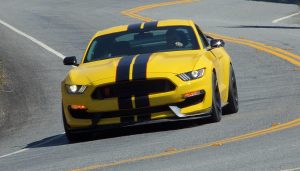
Hypothetically speaking, how might a new mid-engine Corvette stack up against other supercars?
Mid-Engine Corvette Will Compete With Supercars
It has been almost 50 years since the first mid-engined Corvette concept was shown to the public. In 1968, the experimental Astro II was revealed at the New York Auto Show. It never made it to production. Since then, both concept cars and rumors of mid-engine Corvettes have appeared at regular intervals.
No one outside GM has any idea what the rumored mid-engine Corvette will look like. In the meantime, enjoy this mid-engine Corvette concept from 1972. It is the Reynolds XP-895, an aluminum-bodied prototype built by the Reynolds Metals Company, maker of the rolls of aluminum foil found in every kitchen drawer! A 454 cubic-inch V8 provided plenty of power, but it was too expensive to put into production at that time. If you look closely, you can see the origins of the front and rear end redesign of the 1973/74-1979 C3 Corvette!
(Rumored) 2019 Mid-Engine Corvette
Reports have recently surfaced about a new mid-engine ‘Vette coming in 2018 as a 2019 model. Those rumors suggest that the current V8 engine will be placed in the chassis forward of the rear wheels. That means the Corvette could be powered by either of the current 460-horsepower or a 650-horsepower engines, or possibly a higher-output version.
A new mid-engine Corvette would have to compete with a large field of mid-engine supercars from around the world. It would need to have a higher level of performance than the current top-of-the-line C7 Z06. Chevrolet has also had great success with the Chevrolet Volt’s hybrid-electric technology. Is it possible that we could see a hybrid supercar from an American manufacturer?
Hypothetically speaking, how might a new mid-engine Corvette stack up against other supercars?
Acura NSX
The most recent supercar to actually hit the market after a decades-long wait is the Acura NSX. Unlike the Corvette, the NSX doesn’t just rely on displacement for its power production. A modest 3.5-liter DOHC V-6 is fitted with twin turbochargers to pound out 573 horsepower, assisted by two electric motors, slotting it into the hybrid supercar category.
A precision DCT (dual clutch) transmission puts that horsepower to good use with crisp shifting, and it’s a big reason the NSX can produce 0-60 mph times of 3.0 seconds.
The C7 Corvette Z06 is rated at 2.95 seconds 0-60, but it’s a front-engine car. It handles incredibly well, but the NSX’s mid-engine layout would help it to out-maneuver the current Corvette. Change up the weight distribution on the C8 Corvette with a mid-engine design, and things could get interesting…
In terms of cost, the NSX could be the closest mid-engine competitor for the Corvette with a price tag of $156,000 – even though that’s nearly double the base price of the current Z06.







